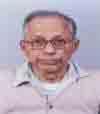What Do These Series Of Test Reports For The Heart Indicate?

Question: I had a series of test for the heart. 1 EKG shows abnormal
2. ECHO came back that there was no damage to the heart muscles
Dr. said the front of the heart looks good.
3. Nuclear stress test show abnormal.
2. ECHO came back that there was no damage to the heart muscles
Dr. said the front of the heart looks good.
3. Nuclear stress test show abnormal.
Brief Answer:
I do not think that you have anything to worry about.
Detailed Answer:
Thanks for asking on HealthcareMagic.
I have gone through the details as well as the attached image. The EKG shows a first degree conduction block. It is a minor electrical conduction problem of the heart but unless there are other complications, it is not a cause for concern.
Rather than the nuclear stress test, I would ask about the ejection fraction (EF) from the echocardiogram. If the EF is 85% or more, and if you are not getting chest pains, you do not need any further interventions at the moment, not even the CTA. In case you are getting chest pains, going for a CT Angiogram (CTA) would be a good idea.
Hope that helps.
Regards
Dr.Kunal Saha
I do not think that you have anything to worry about.
Detailed Answer:
Thanks for asking on HealthcareMagic.
I have gone through the details as well as the attached image. The EKG shows a first degree conduction block. It is a minor electrical conduction problem of the heart but unless there are other complications, it is not a cause for concern.
Rather than the nuclear stress test, I would ask about the ejection fraction (EF) from the echocardiogram. If the EF is 85% or more, and if you are not getting chest pains, you do not need any further interventions at the moment, not even the CTA. In case you are getting chest pains, going for a CT Angiogram (CTA) would be a good idea.
Hope that helps.
Regards
Dr.Kunal Saha
Above answer was peer-reviewed by :
Dr. Vinay Bhardwaj


I just asked what my ejection fraction from the echocardiogram was and they told me 55%. Is this good or bad.
Brief Answer:
You may proceed with the CTA
Detailed Answer:
The ejection fraction is on the lower side. In that case, getting a CTA done should be a good idea.
Regards
You may proceed with the CTA
Detailed Answer:
The ejection fraction is on the lower side. In that case, getting a CTA done should be a good idea.
Regards
Above answer was peer-reviewed by :
Dr. Vinay Bhardwaj


I been reading up on ejection fraction on echocardiogram. Everything I read so far shows that between 50% and 70% is normal. Is this true I'm very worried.
I will get the CTA ..Can you tell me how this is treated ..
I will get the CTA ..Can you tell me how this is treated ..
Brief Answer:
No need to be apprehensive
Detailed Answer:
You have read it correctly. That is the reason I mentioned it to be on the lower side of normal. A CTA will help in detecting blockages in the coronary blood supply. The location of such a blockage is important. Blockages on the left side are more severe and need to be treated with priority. The number of blockages also plays a role. One or two blockages can be managed with an angioplasty whereas 3 and more blockages call for a coronary bypass surgery.
However, you need not get that concerned at the moment. The chances of getting a severe blockage might not be very high in your case unless you have severe symptoms. Stay relaxed.
No need to be apprehensive
Detailed Answer:
You have read it correctly. That is the reason I mentioned it to be on the lower side of normal. A CTA will help in detecting blockages in the coronary blood supply. The location of such a blockage is important. Blockages on the left side are more severe and need to be treated with priority. The number of blockages also plays a role. One or two blockages can be managed with an angioplasty whereas 3 and more blockages call for a coronary bypass surgery.
However, you need not get that concerned at the moment. The chances of getting a severe blockage might not be very high in your case unless you have severe symptoms. Stay relaxed.
Note: For further queries related to coronary artery disease and prevention, click here.
Above answer was peer-reviewed by :
Dr. Raju A.T

Answered by

Get personalised answers from verified doctor in minutes across 80+ specialties



